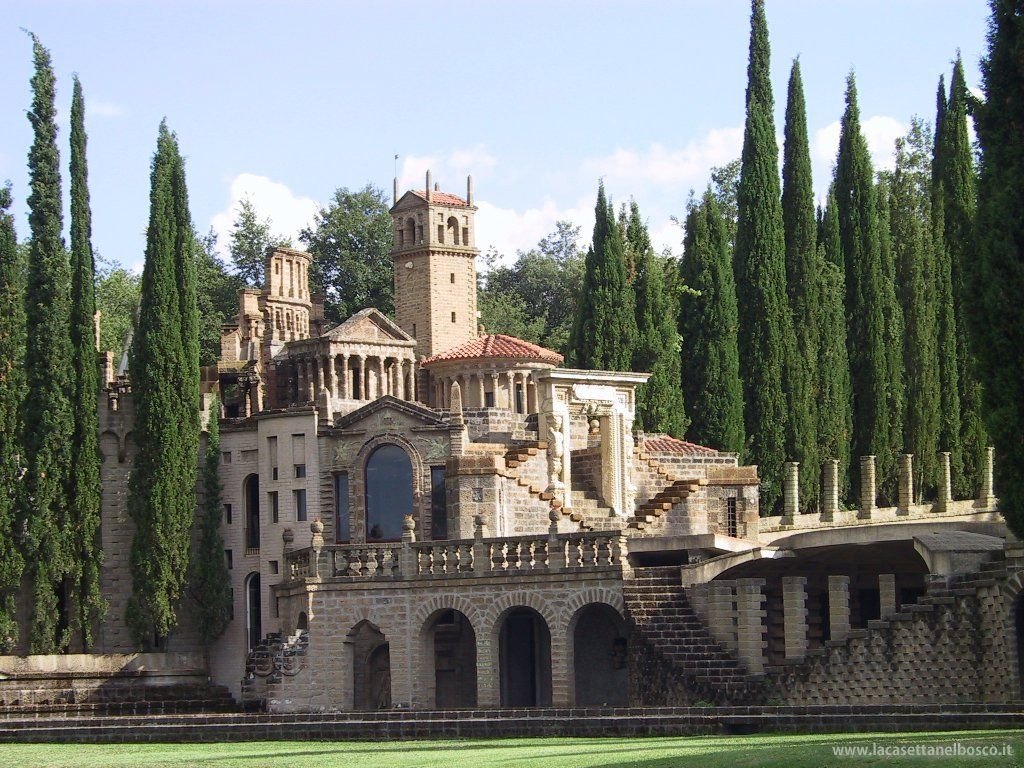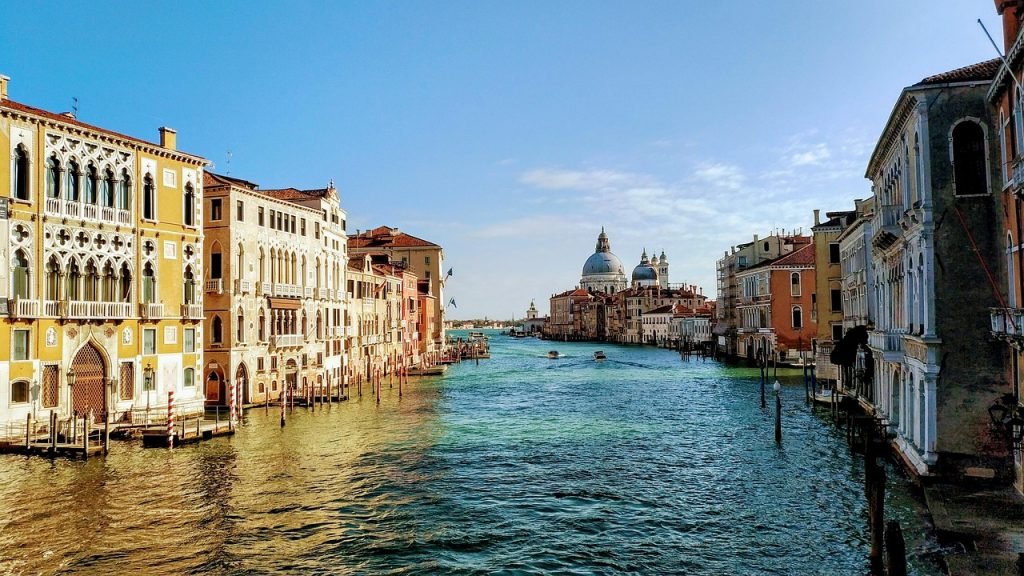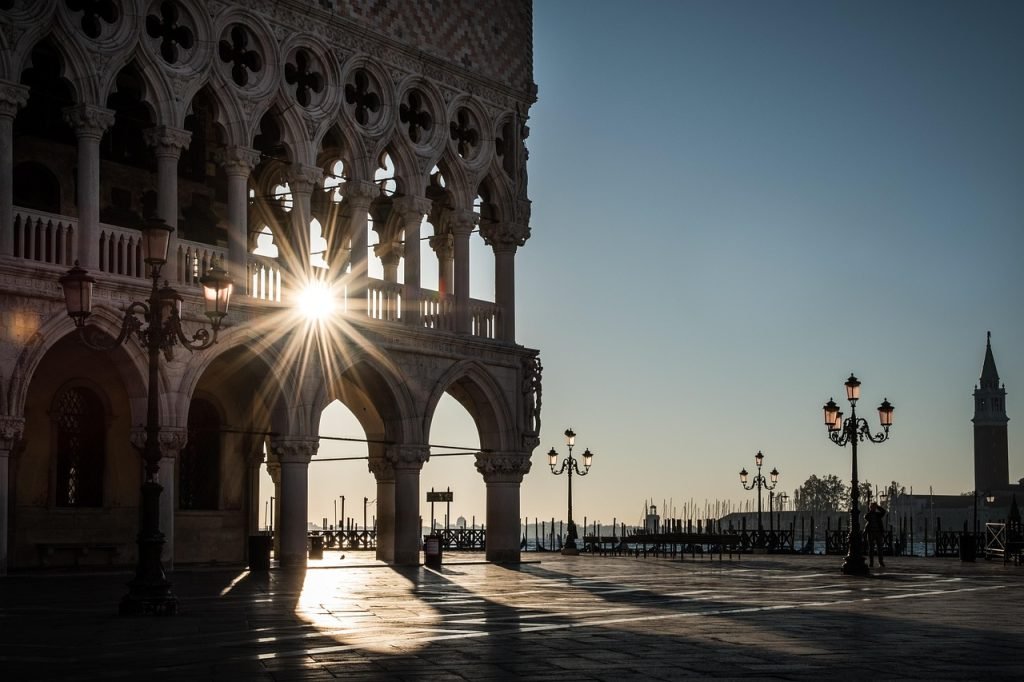In the rolling hills of Umbria, hidden among ancient olive groves and forgotten medieval hamlets, stands one of Italy’s most extraordinary secrets—a place so bewildering, so magnificently bizarre, that even most Italians remain unaware of its existence. La Scarzuola isn’t just a hidden gem; it’s a complete reimagining of reality itself, a “stone anthology” that its creator, architect Tomaso Buzzi, conceived as his personal interpretation of the “ideal city”.
This is no ordinary destination. La Scarzuola represents something far more profound than architectural tourism—it’s an initiation into one man’s fevered dream of perfection, a labyrinthine meditation on art, philosophy, and the very nature of human aspiration. Built adjacent to a 13th-century Franciscan monastery where Saint Francis himself once lived, this surreal complex juxtaposes the sacred with the profane, the holy with the hedonistic, in ways that will challenge everything you think you know about Italian architecture.
For decades, this “adults-only architectural playground” remained virtually unknown, accessible only to those intrepid enough to seek out one of Italy’s most eccentric experiences. Today, while still requiring advance booking and considerable effort to reach, La Scarzuola opens its gates to visitors ready for a journey unlike any other.
The Architect’s Magnificent Obsession
Tommaso Buzzi wasn’t just an architect—he was a visionary whose imagination refused to be constrained by conventional reality. Born in 1900, Buzzi had already established himself as a significant figure in Italian design when he discovered this remote Umbrian hillside in the 1950s. What he found was a decaying Franciscan convent where, according to legend, Saint Francis had built a hut from a plant called “scarzuola” (scarlet-flowered bean).
Rather than simply restore the monastery, Buzzi embarked on something far more ambitious: the creation of his own “ideal city.” This wasn’t architecture in any traditional sense—it was philosophy made manifest in stone, a three-dimensional autobiography that would consume the final decades of his life.
Buzzi’s vision drew inspiration from an extraordinary range of sources: Renaissance treatises on ideal cities, alchemical symbolism, Dante’s Divine Comedy, and his own deeply personal mythology. The result is a place that seems to exist outside normal space and time, where staircases lead nowhere, where classical temples rise next to impossible geometries, and where every surface tells multiple stories simultaneously.
The architect called his creation a “stone anthology”—and indeed, wandering through La Scarzuola feels like reading a book written in three dimensions, where each chapter reveals new layers of meaning and every page turn brings fresh astonishment.
Journey from Perugia: Your Gateway to the Extraordinary
The road distance from Perugia to La Scarzuola is just 25.9 miles, making it an ideal day trip that promises rewards far exceeding the modest effort required to reach it. Yet this short journey takes you from the familiar rhythms of medieval Umbria into something approaching the otherworldly.
Driving Directions from Perugia
From Perugia, take the E45 highway south toward Orvieto, then exit at Fabro Scalo. The route winds through classic Umbrian countryside—rolling hills dotted with ancient hilltop towns, vineyards that have remained unchanged for centuries, and landscapes that seem painted by Renaissance masters. This gentle introduction to the day’s adventure provides no hint of the surreal experience awaiting you.
Following the official route is crucial: take only the official roads through Fabro Scalo, Montegabbione, then Montegiove, continuing for 1 km to the La Scarzuola junction, then 2 km of gravel road. This final approach along the unpaved track feels deliberately ritualistic—a transition from the ordinary world into Buzzi’s realm of infinite possibility.
Planning Your Umbrian Architectural Pilgrimage
La Scarzuola can be visited all year round, but only by appointment. The visit lasts about one and a half hours, and guided tours cost €10 per person and are obligatory—reservations must be made using the form or writing to info@lascarzuola.com. This isn’t mere bureaucracy. It’s an integral part of Buzzi’s vision. The guided experience ensures that visitors encounter the complex with proper preparation and context.
The guided tours are available in both English and Italian, led by knowledgeable guides who understand that La Scarzuola requires interpretation. This isn’t a place you can simply wander through with a smartphone camera—every element serves multiple functions, every sight line has been carefully calculated, and every symbol carries layers of meaning that require explication.
The Experience: Prepare for Architectural Psychedelia
Once you pass through the ancient wooden gates, La Scarzuola reveals itself as something that defies easy categorization. This isn’t architecture in any conventional sense—it’s sculpture on an environmental scale, theater that you walk through rather than observe, philosophy rendered in stone and space.
The complex unfolds as a series of interconnected courtyards, theaters, and impossible structures that seem to challenge the laws of physics and logic. Staircases spiral upward to platforms that lead nowhere. Classical temples sit atop Escher-like constructions that hurt your mind to contemplate. Doors open onto walls, windows frame views of other windows, and perspectives shift with every step.
Buzzi designed La Scarzuola as an “initiatory journey”—a path of discovery that would transform visitors through direct experience rather than intellectual understanding. Walking through the complex, you begin to understand architecture not as mere building but as a means of altering consciousness itself.
The juxtaposition with the genuine 13th-century Franciscan monastery heightens the effect. Here, authentic medieval spirituality meets 20th-century surrealism, creating a dialogue across centuries about the nature of human aspiration and the relationship between the sacred and the artistic.
The Sacred and the Profane: A Philosophical Playground
What makes La Scarzuora truly extraordinary isn’t just its architectural audacity—it’s the sophisticated philosophical program that underlies every element. Buzzi created his ideal city as a meditation on the seven deadly sins and the journey from earthly pleasure to spiritual transcendence. Yet unlike traditional moralistic art, La Scarzuola celebrates both the sacred and the profane, suggesting that true wisdom requires engagement with all aspects of human experience.
The complex includes theaters dedicated to various forms of performance and contemplation, gardens that shift between formal geometry and wild profusion, and architectural elements that reference everything from Palladio to Piranesi. Each space serves as a stage for different aspects of human consciousness, creating an environment where visitors can explore their own responses to beauty, mystery, and the infinite possibility of imagination.
Buzzi filled his creation with symbols drawn from alchemy, mythology, and personal iconography. Lions represent courage, labyrinths suggest the complexity of the spiritual path, and impossible architectures point toward realities beyond conventional understanding. The effect is overwhelming in the best possible way—a sensory and intellectual feast that continues revealing new meanings long after you’ve returned home.
Beyond the Ideal City: Exploring Umbrian Context
La Scarzuola exists within the broader context of Umbria’s extraordinary cultural landscape. The nearby town of Montegabbione offers glimpses of authentic medieval Italy, while the region’s countless churches, monasteries, and hilltop villages provide perfect counterpoints to Buzzi’s surreal vision.
Consider extending your visit to explore Orvieto, with its magnificent cathedral and underground tunnels, or the thermal springs of San Casciano dei Bagni. The contrast between Umbria’s ancient rhythms and Buzzi’s modern fantasy creates a dialogue about continuity and innovation that enriches both experiences.
Local restaurants in the area serve traditional Umbrian cuisine that provides the perfect grounding after a morning spent in architectural wonderland. The earthy reality of truffles, wild boar, and robust local wines offers a delicious return to the physical world after hours spent contemplating the metaphysical.
The Practical Reality: What You Need to Know
Let’s be direct about what visiting La Scarzuola entails. This isn’t a casual tourist attraction—it’s an intense, sometimes challenging experience that demands your complete attention. La Scarzuola can only be reached by car, and the final approach along gravel roads requires careful navigation.
The guided tour format might feel restrictive if you’re accustomed to self-directed exploration, but it’s absolutely essential here. Without proper context, La Scarzuola could seem like architectural chaos rather than the sophisticated synthesis it actually represents. The guides aren’t merely providing information—they’re facilitating a carefully orchestrated encounter with one of the 20th century’s most singular artistic visions.
Buses up to 10 meters can reach the entrance, while larger vehicles must remain on the local road with van service provided for guests. The site doesn’t serve food or beverages, so plan accordingly for your visit.
Why This Hidden Gem Matters Now
In our era of architectural standardization and digital mediation, La Scarzuola stands as a powerful reminder of what’s possible when vision, resources, and pure creative audacity combine without compromise. This isn’t just tourism—it’s a masterclass in how art can create experiences that expand consciousness and challenge assumptions about reality itself.
The fact that La Scarzuola remains largely unknown, even to many Italians, only enhances its power. In a world where authentic mystery has become increasingly rare, Buzzi’s creation offers something genuinely transformative—a place where the impossible becomes possible and where architecture serves as a vehicle for transcendence.
Making the Pilgrimage Worthwhile
From Perugia, La Scarzuola represents more than just a day trip—it’s an opportunity to encounter one of the most radical architectural experiments in European history. Buzzi created something that shouldn’t exist but absolutely does, proving that the human imagination remains capable of manifesting realities that defy every conventional expectation.
This is architecture as initiation, building as biography, and construction as consciousness-altering art. La Scarzuola challenges visitors to expand their understanding of what architecture can achieve, what art can accomplish, and what human vision can create when freed from the constraints of practical necessity.
Pack comfortable walking shoes, bring your most open mind, and prepare for an experience that will permanently alter your understanding of the relationship between space, consciousness, and possibility. La Scarzuola isn’t just worth the drive from Perugia—it’s worth a pilgrimage from anywhere in the world.
This is Italy’s most extraordinary secret, hiding in plain sight among the hills of Umbria, waiting for those brave enough to seek out authentic wonder in an increasingly standardized world.
Ready to embark on this extraordinary journey? Contact La Scarzuola directly at info@lascarzuola.com to reserve your guided tour. Located at Vocabolo Caporlese, 05016 Montegabbione (TR), Umbria. Advanced booking is mandatory for this unforgettable encounter with architectural impossibility.


